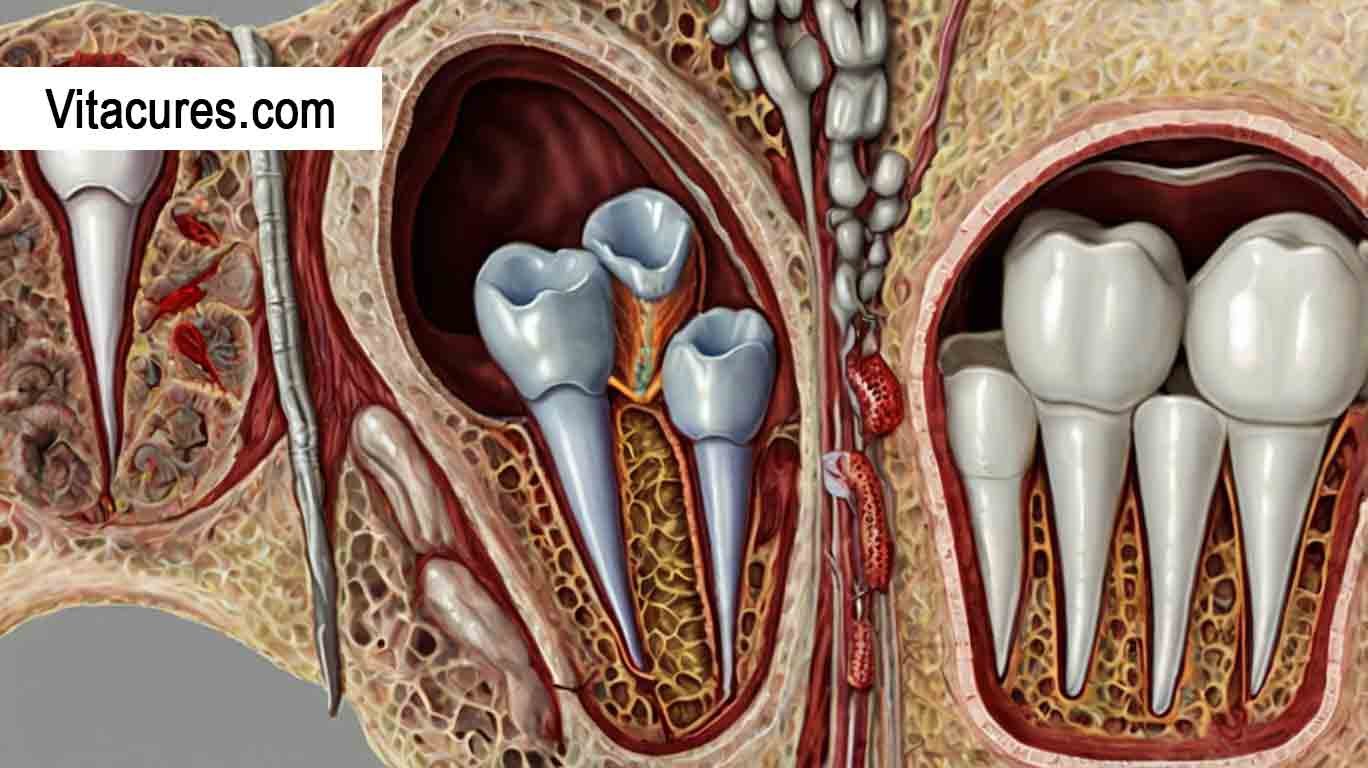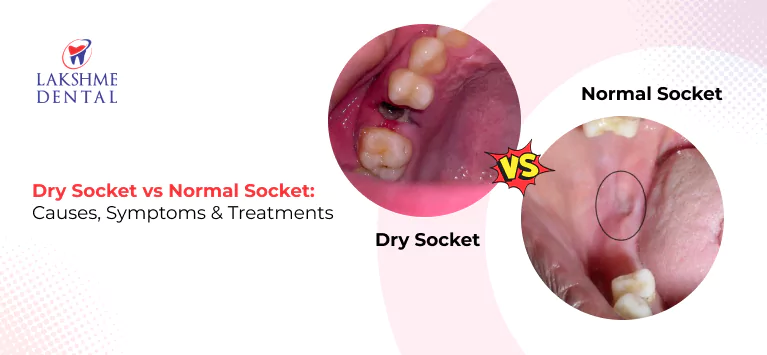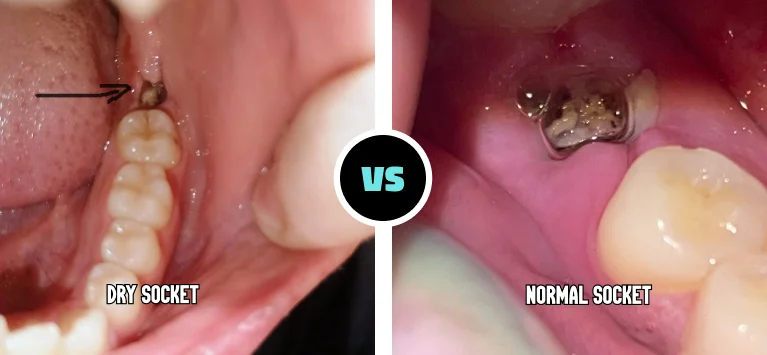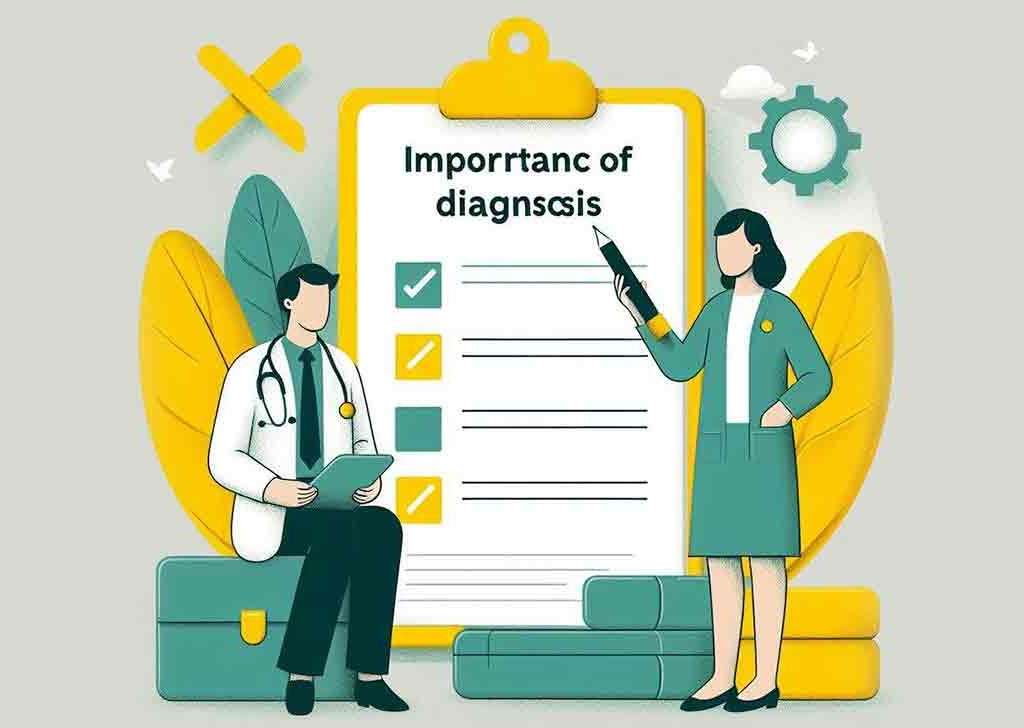Dry socket, or alveolar osteitis, occurs when the blood clot at the extraction site dissolves or dislodges, exposing underlying bone & nerves, and leading to severe pain. In contrast, normal healing involves the formation of a stable blood clot that protects the extraction site, allowing tissue regeneration & reduced discomfort. Key differences include pain intensity, duration, & the presence of bad breath or taste in dry socket cases, while normal healing typically features mild discomfort & gradual improvement within days. Prompt dental care can address dry sockets effectively, while normal healing usually requires attention to post-operative care.
Dry Socket vs Normal Healing

Dry Socket vs Normal Healing: Key Differences & Healing Process Explained. Discover the key differences between Dry Sockets & Normal Healing. Learn about the healing process & how to ensure a smooth recovery.
Read More: Ashwagandha Can Make You Horny / Vaginal Pump / Omron Blood Pressure / Vitamin C in Daily / vitamin D deficiency / magic wash laundromat / amphound / pixelxoom / cake ideas
Read More: vaginal depth / Vaginal Pump / Vaginal Cuff / Vaginal Dryness / Tighten Your Vagina / Sore Penis After Sex / Nicotine and Your Sex Drive / Why am I so horny? / Sexual Battery
Read more: 8 oz Chicken Breast / Sea Moss Gel / V8 Energy Drinks / 3 eggs calories / Eating Masago

What is a Dry Socket?
A dry socket occurs after a tooth extraction. It happens when the blood clot that should form at the extraction site fails to develop or is dislodged. This void can lead to intense pain & other symptoms.
Typically, after an extraction, a blood clot forms to protect the bone & nerves. If this clot is lost, the bone can be exposed. This exposure can lead to inflammation & infection.
Key factors contribute to a dry socket. These include:
- Smoking or using tobacco products
- Improper aftercare after surgery
- Infection at the extraction site
- Taking oral contraceptives
It is essential to recognize the symptoms quickly. Common symptoms include:
- Severe pain radiating from the socket
- Bad breath or an unpleasant taste
- Visible bone in the extraction site
These symptoms usually appear two to four days after the extraction. If experienced, immediate consultation with a dentist is crucial.
Normal Healing Process After Tooth Extraction
The healing process after tooth extraction is generally straightforward. Once the tooth is removed, the body begins its recovery process immediately. Here’s what happens:
Formation of Blood Clot
The first step in normal healing is the formation of a blood clot. This clot forms within minutes to hours after extraction. It serves many purposes:
- Protects the exposed bone & nerves
- Promotes healing by providing a matrix for new tissue
- Seals the wound to prevent bacteria from entering
Tissue Regeneration
After the clot forms, the body works hard to regenerate tissue. This process can be broken down into phases:
| Phase | Description |
|---|---|
| Inflammation | White blood cells migrate to the site. |
| Proliferation | New cells form to replace lost tissue. |
| Maturation | Tissue becomes stronger & more organized. |
This complete process usually takes several weeks. Be that as it may, visible signs of healing can appear much sooner.
Key Differences Between Dry Socket & Normal Healing
Understanding the differences between dry socket & normal healing is vital. Here are the key contrasts:
| Aspect | Normal Healing | Dry Socket |
|---|---|---|
| Blood Clot Formation | Completes naturally & protects site | Does not form or is lost |
| Pain Level | Mild to moderate | Severe, worsening over time |
| Visible Symptoms | Normal swelling & redness | Visible bone & foul odor |
Symptoms of Dry Socket Compared to Normal Healing
Recognizing symptoms can help differentiate between normal healing & a dry socket. Here’s a closer look:
Normal Healing Symptoms
Normal healing after a tooth extraction generally involves:
- Mild discomfort at the extraction site
- Minimal swelling
- Light bleeding that stops after a few hours
- Improving condition over days
Symptoms of Dry Socket
In contrast, symptoms of a dry socket include:
- Intense pain beginning 2-4 days post-extraction
- Pain radiating to the ear or jaw
- Bad taste in the mouth
- Visible bone in the socket
Identifying these symptoms is essential for prompt treatment.
Treatment Options for Dry Socket
Obtaining treatment for a dry socket is critical to relieve pain & promote healing. Options include:
Pain Management
Pain relief is the first step. Over-the-counter medications may be effective initially. Be that as it may, a dentist may prescribe stronger pain relievers if needed.
Clot Replacement
In some cases, a dentist may place a medicated dressing in the socket to help relieve pain. This dressing helps encourage clot formation & healing.
Daily Care
Oral hygiene becomes crucial. Dentists often instruct patients to keep the area clean but advise avoiding vigorous rinsing. Gentle saltwater rinses might be suggested.
Follow-Up Visits
Regular follow-ups ensure that the area is healing properly. Your dentist can monitor the extraction site & provide necessary adjustments to treatment.
Preventing Dry Socket After Tooth Extraction
Knowing how to prevent a dry socket is essential. Here are some important tips:
Avoid Smoking
Smoking can dislodge a blood clot. Quitting before surgery & not smoking afterward is important.
Proper Aftercare
Following your dentist’s instructions post-extraction is essential. This might include avoiding hard foods, using prescribed medications, & attending follow-up appointments.
Hydration
Staying hydrated helps the blood to clot. Drinking plenty of water is essential in recovery.
Oral Hygiene
Maintain hygiene but avoid the extraction site when brushing. Gentle rinsing can help prevent infection.
Impact of Factors on Healing
Several factors can impact the healing process. Understanding these can enhance care & recovery.
Age
Patients’ age can significantly influence healing times. Younger patients typically recover faster than older adults.
Medical Conditions
Conditions like diabetes or autoimmune diseases can slow healing. Managing these conditions before surgery may help.
Medications
Certain medications can affect blood flow or clotting. Discussing prescribed medications with the dentist is vital for ensuring recovery.
Quote
“Understanding the healing process is essential for effective recovery.” – John H. Smith
When to Seek Dental Help
Knowing when to contact a dentist post-extraction is crucial. You should seek professional help if you notice the following:
Persistent Pain
Severe pain that lasts beyond four days might signal a dry socket.
Bad Breath or Bad Taste
An unpleasant taste in your mouth or bad breath could indicate infection or a dry socket.
Fever
Any signs of fever or chills can signal an infection & require immediate attention.
Understanding the Healing Signs
Being aware of normal healing signs can provide reassurance & help gauge your recovery.
Expected Symptoms
Some normal symptoms include:
- Minor swelling that decreases daily
- Decreased bleeding after the first few hours
- Pain that gradually improves over time
Abnormal Symptoms
Signs that healing is not progressing properly may include:
- Persistent pain in & around the socket
- Foul smell from the extraction site
- Visible pus or drainage
Recognizing these signs early can make a significant difference.
The Importance of Follow-Up Care
Regular follow-up appointments can significantly aid recovery. During these visits, the dentist assesses the healing process.
Monitoring Healing
Checking the socket for signs of proper healing can identify problems early. Quick intervention can prevent challenges like infections or dry sockets.
Adjusting Treatment
If the healing process isn’t as expected, the dentist can adjust the treatment plan. This might include prescribing medications or a course of further care.
Conclusion on Healing Processes
Both dry socket & normal healing processes differ significantly. Understanding these can provide valuable insight for patients. Recognizing symptoms early & involving a dental professional is essential in achieving successful recovery.
What is Dry Socket?
Dry Socket is a dental condition. It occurs after a tooth extraction. The blood clot that forms in the socket is important for healing. If this clot dislodges or dissolves, it causes dry socket. This condition is painful. The exposed bone & nerves lead to severe discomfort.
Symptoms usually start two to four days after tooth removal. Pain may spread from the extraction site to the ear, eye, or neck. Bad breath & an unpleasant taste may also occur. Pain relief is crucial. Dentists recommend specific treatments for dry socket.
How Normal Healing Occurs
Normal healing is a natural process. After a tooth removal, blood fills the socket. A blood clot forms within hours. This clot protects the bone & nerves. Over time, it turns into granulation tissue. This tissue helps in rebuilding the gums & bone.
Healing typically takes about one to two weeks. During this period, it is important to follow dental advice. Avoiding smoking & certain foods aids healing. If healing progresses well, pain decreases gradually. Patients usually notice less sensitivity in the area.
Key Differences Between Dry Socket & Normal Healing
| Feature | Dry Socket | Normal Healing |
|---|---|---|
| Presence of Blood Clot | No | Yes |
| Pain Level | High | Low |
| Time of Onset | 2-4 Days | Immediately |
| Treatment Required | Yes | No |
Symptoms of Dry Socket
- Severe pain around the extraction site
- Radiating pain to other areas
- Visible bone in the socket
- Bad breath or foul taste
Symptoms are notable & painful. The presence of pain signals a problem. Visits to the dentist are essential for proper care.
Symptoms of Normal Healing
- Minor discomfort
- Reduction in swelling
- Gradual fading of pain
- Improved ability to chew
Normal healing shows signs of improvement. Discomfort is mild & temporary. Following care instructions helps speed up this process.
Causes of Dry Socket
Several factors contribute to dry socket. Smoking is one major cause. It hinders blood flow & dislodges clots. Poor oral hygiene can also play a role. Patients not following post-op care instructions increase their risks.
Other causes include:
- Traumatic extractions
- Hormonal changes
- Poor nutrition
Understanding these causes helps in preventing dry socket. Awareness can lead to better post-operative decisions.
How to Prevent Dry Socket
Preventing dry socket is crucial. Take care after a tooth extraction. Here are some tips:
- Follow the dentist’s instructions
- Avoid strenuous activities
- Do not smoke
- Eat soft foods for a few days
Good practices lead to better healing outcomes. Consider these actions seriously to avoid complications.
Treatments for Dry Socket
Dry socket requires professional treatment. Dentists provide several options. These include:
- Medicated dressings in the socket
- Pain relief medications
- Antibiotics if needed
If treatment is prompt, pain reduces. A dentist can help accelerate healing. Always seek help if symptoms appear.
Healing Process of Normal Extraction
The healing process after tooth extraction typically follows a series of stages. Initially, a clot forms, protecting the socket. The body starts to rebuild tissue. This process is smooth & gradual. Within a week, patients may notice reduced swelling & discomfort.
Vigilance is key. By observing the area, any unusual symptoms can be detected early. Good oral care helps promote healing. Ultimately, the dental site restores itself in time. Normal functions, like chewing & speaking, return gradually.
What I Experienced
After my wisdom tooth extraction, I watched my healing process closely. I followed every instruction. I avoided hard foods & smoking. Fortunately, I had no pain. Instead, my healing felt smooth. Each day brought improvement, & it was quite encouraging.
“Understanding the differences in healing processes can help many avoid complications.” Eva Gold

What is dry socket?
Dry socket is a painful condition that can occur after a tooth extraction when the blood clot at the extraction site dislodges or dissolves, exposing underlying bone & nerves.
What are the symptoms of dry socket?
Symptoms include severe pain that typically starts a few days after extraction, a visible empty socket, bad breath, & a foul taste in the mouth.
How does normal healing differ from dry socket healing?
Normal healing involves the gradual formation of a blood clot, which protects the bone & nerves, while dry socket healing is characterized by pain & a lack of blood clot presence.
Can dry socket occur after any tooth extraction?
Yes, dry socket can occur after any type of tooth extraction, but it is more common following the removal of lower wisdom teeth.
What can increase the risk of developing dry socket?
Factors that can increase the risk include smoking, poor oral hygiene, trauma to the extraction site, & previous history of dry socket.
How long does it take for dry socket to heal?
Dry socket typically takes 7 to 10 days to heal, depending on the individual’s health & the care taken of the extraction site.
What treatment options are available for dry socket?
Treatment may involve pain management, cleaning the socket, & the placement of a medicated dressing to promote healing.
How can I prevent dry socket after tooth extraction?
To prevent dry socket, avoid smoking, follow post-operative care instructions, maintain good oral hygiene, & avoid sucking motions, such as using straws.
What will normal healing look like after tooth extraction?
Normal healing includes swelling & discomfort that gradually decrease, followed by the formation of granulation tissue & the establishment of a blood clot.
How can I identify if I have dry socket?
If you experience intense pain, notice an empty socket, or detect a bad odor several days after extraction, you may have dry socket & should consult a dentist.
Does dry socket require dental intervention?
Yes, dry socket often requires dental intervention for pain relief & to promote proper healing of the extraction site.
Are there any home remedies for dry socket?
While consulting a dentist is essential, some home remedies may include saltwater rinses to keep the area clean & cold compresses to reduce swelling.
What does the recovery process entail for normal healing?
Recovery for normal healing generally includes managing discomfort with over-the-counter pain relief, following care instructions, & attending follow-up appointments.
Is it normal to have some discomfort after a tooth extraction?
Yes, mild discomfort & swelling are normal after a tooth extraction as part of the healing process.
What are the signs that normal healing is occurring?
Signs of normal healing include reduced pain, swelling, & the gradual formation of a blood clot at the extraction site.
What should I do if I suspect dry socket?
If you suspect dry socket, contact your dentist for evaluation & appropriate treatment to manage pain & encourage healing.
Can diet affect healing after extraction?
Yes, a soft & nutritious diet can promote healing, while hard or crunchy foods might irritate the extraction site & hinder recovery.
How important is follow-up care after extraction?
Follow-up care is crucial to ensure proper healing, address any complications, & assess the extraction site for signs of dry socket.
Does everyone experience dry socket after extraction?
No, not everyone will experience dry socket; it occurs in a small percentage of patients, often influenced by certain risk factors.
How can a dentist treat dry socket pain?
A dentist can treat dry socket by cleaning the area, applying a medicated dressing, & prescribing pain relief medication to manage symptoms.
Conclusion
In summary, the difference between dry socket & normal healing is clear. Normal healing after a tooth extraction includes forming a blood clot that protects the wound, while dry socket happens when that clot is lost or doesn’t form properly, leading to pain & a longer healing process. If you notice severe pain or bad breath after an extraction, it’s essential to consult your dentist. Being aware of these differences can help you take better care of your mouth & ensure a smoother recovery. Prioritizing your dental health is essential for overall well-being.



